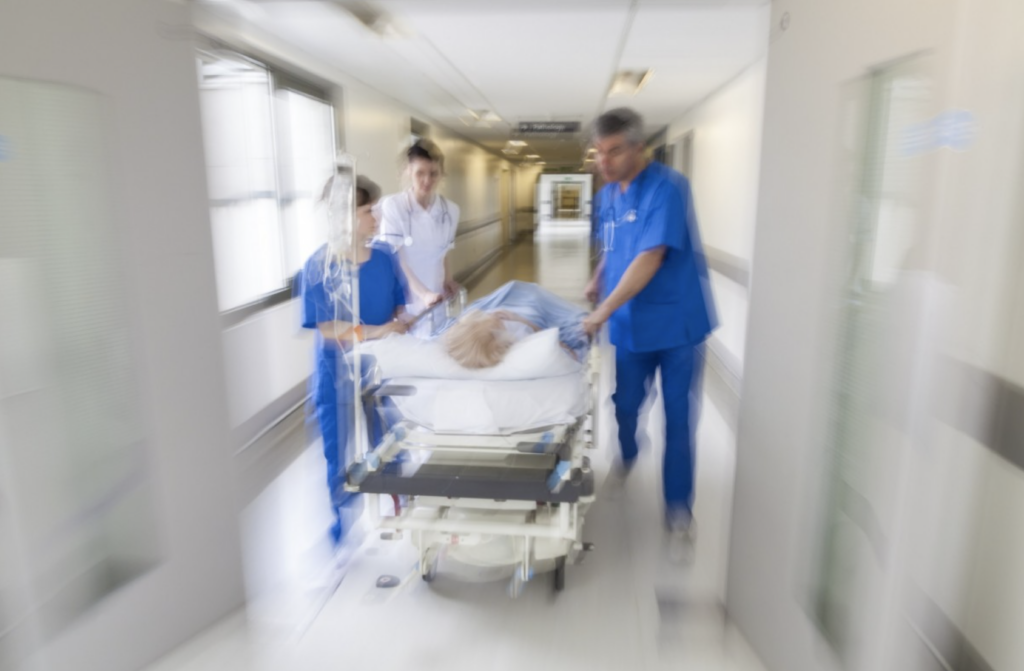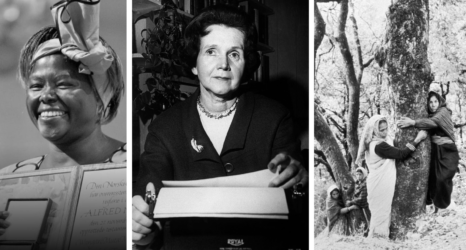I want the best shot possible for all those who, like me, have faced and continue to deal with cancer during the pandemic.

As a new year begins, I am acutely aware nothing about my being here with my toddler son and my family is a given. Without chemotherapy, surgery and radiation treatment for breast cancer in the early months of the pandemic, I would be very ill by now—or possibly dead.
After I was diagnosed in October 2019 with invasive ductal carcinoma, I was lucky to continue getting treatment in spite of the rapid spread of COVID-19 around the world and the resulting shutdowns to slow transmission of the virus and preserve scarce medical resources.
While the direct human toll of the pandemic is undeniably tragic, at the same time, care for cancer patients has been negatively impacted here in the U.S. and internationally.
A new study shows that with the onset of the COVID-19 pandemic in 2020, the systems for patient care around the country are stretched thin. As compared to a 2018–2019 baseline, new diagnoses of prostate, lung, bladder and colorectal cancers among the veteran population served by the Veterans Affairs Healthcare System dropped by 13 percent in 2020. Colonoscopies were down by 45 percent in the VA system.
The stresses on the health care system include diverting financial and personnel resources away from research to canceling so-called elective cancer surgeries. During the ongoing surge of COVID-19 cases driven by variants, one in five U.S. households have had to defer necessary medical care. Among these households unable to access care for serious medical problems, three in four report experiencing negative health consequences.
Delaying cancer diagnoses and treatment can mean life or death.
When I was first diagnosed with primary breast cancer more than two years ago, I was five months pregnant with my son and had a three-week wait for medical imaging. In that time, my tumor grew rapidly from barely noticeable when I pressed deep into the top of my left breast to painful and tender with a nearly four-centimeter mass.
Following the breast ultrasound, mammogram and biopsy all on the same day, the radiologist told me, “The important thing is that you are here.”
There was an estimated cancer screening deficit of 9.4 million for breast, colorectal and prostate cancers in 2020 compared to 2019—the year I got my own diagnosis.
Many were not able to receive urgent medical imaging early in the pandemic. The numbers of people going in for diagnostic and screening imaging plummeted in the first part of 2020, as did clinical visits for cancer care.
Screening rates were down more than 90 percent for breast cancer alone in April 2020. While screening rates have rebounded, there was an estimated cancer screening deficit of 9.4 million for breast, colorectal and prostate cancers in 2020 compared to 2019, the year I got my own diagnosis.
Both the breast surgeon and medical oncologist met with me after hours. I left the downtown women’s hospital well after dark at the end of a long day of follow-up testing and meeting these doctors with a treatment plan. I was in the infusion chair for my first chemo session with my newly placed port-a-cath in my still swollen right chest less than two weeks later.
All that mattered.
My tumor was grade three, meaning it was super fast-growing. It had already spread to at least one lymph node under my left armpit by the time I was diagnosed, meaning it had found the on-ramp to the rest of my body.
My son was born healthy in January 2020 as reports about a novel coronavirus were starting to emerge from Wuhan, China. By the time he was two months old much of the world was shut down under varying lockdown and stay-at-home orders. I continued getting weekly chemotherapy treatments as the safety protocols changed with each visit.
My tumor responded well to neoadjuvant chemotherapy and I completed treatment on schedule. For that, I can never thank the medical and support staff enough.
For nearly two decades, oncologists have reported that delays in treatment, from the time of first symptoms and also from diagnosis, can lead to worse outcomes for breast cancer patients, among other types of cancer.
This is another calamity playing out alongside the horrors of COVID-19. Fear of the virus, among other factors, has led to a drop in people seeking care for symptomatic cancers, which is how, like me, most people are diagnosed. Doctors around the country report patients eventually showing up at emergency rooms with more advanced cancers, some terminal diagnoses that might have been avoided had patients been able to access care earlier.
Doctors around the country report patients eventually showing up at emergency rooms with more advanced cancers, some terminal diagnoses that might have been avoided had patients been able to access care earlier.
Projections early in the pandemic from the National Cancer Institute for breast and colorectal cancers suggested nearly 10,000 excess deaths from just these types of cancer by 2030 due to pandemic delays in diagnosis and disruptions in treatment. According to the American Cancer Society, these projections, which assumed a return to normal conditions after six months, were overly optimistic. Similarly to COVID-19, the disparities have disproportionately impacted communities of color.
A COVID-19 diagnosis can delay a cancer patient’s treatment if they test positive for the virus themselves. In one large-scale clinical trial of people with high-risk early breast cancer 4.5 percent of participants experienced a delay in treatment due to a COVID infection.
Cancer patients, in particular men, those older than 65 years old, with hematologic malignancies (blood cancers), among other factors, are at higher risk of severe disease if they do get COVID-19.
The pandemic has also diverted resources away from research into the next generation of possible cancer treatment breakthroughs. In the UK, cancer researchers reported average delays in their work of six months.
Along with decreases in funding, the study by the UK-based Institute of Cancer Research found the surveyed cancer researchers estimated overall delays in research advances of an average of 17 months because of the pandemic.
COVID-19 remains a top public health priority. But with one in every six deaths worldwide attributable to cancer, as a society we all lose out when research funding, personnel and other resources are diverted away from cancer research and treatment.
It has been more than 50 years since the passage of the National Cancer Act of 1971, when former President Richard Nixon declared “war on cancer” with increased research investment and establishing new cancer research centers.
From 1989 to 2018, breast cancer deaths in the United States decreased by 41 percent because of advances in early detection and more effective treatments. The overall annual cancer death rates decreased by 31 percent from 1989 to 2018, largely as a result of reductions in smoking and improved detection and treatment methods.
Reductions in cancer research funding threaten to derail future progress. The American Cancer Society cut expenditures for new research in 2020 by half, from $100 million to $50 million.
I still live under the long shadow of cancer and am in remission—I hope to stay that way. I want the best shot possible for all those who, like me, have faced and continue to deal with cancer during the pandemic, as varied as our diagnoses and experiences are.
In the first months of the pandemic, I was immunocompromised from chemotherapy and could not see friends and family in person aside from my husband and infant son.
As this New Year begins, I will hug my loved ones just a bit tighter and remember those who are no longer with us.
Up next:





